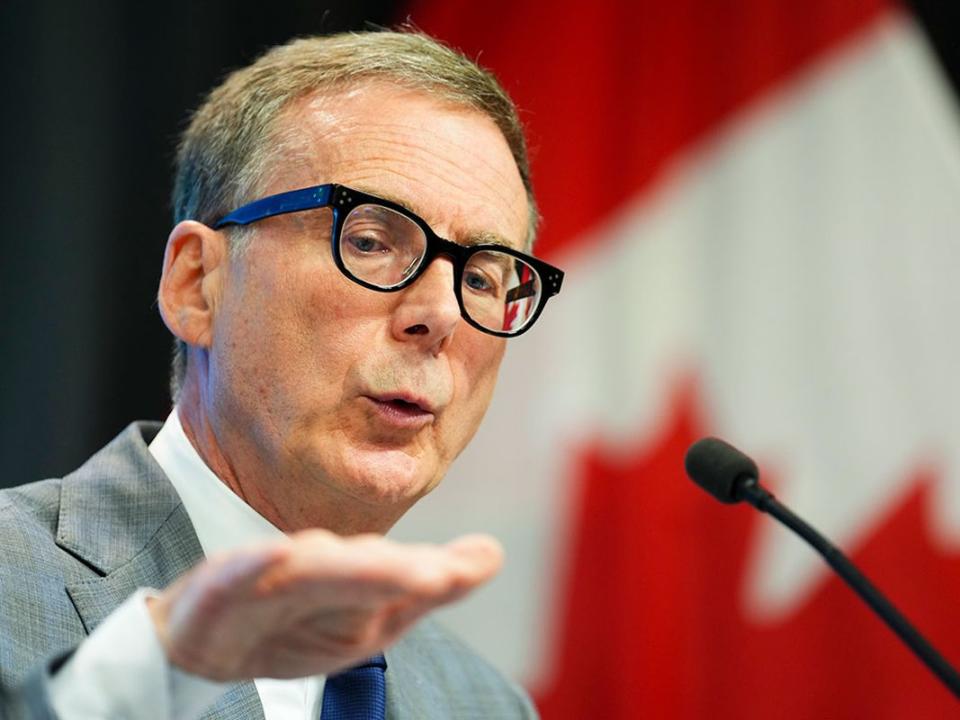'Next move likely an interest-rate cut' — What economists say about the latest inflation numbers

Canada’s inflation rate cooled more than expected in September to an annual pace of 3.8 per cent in a broad-based easing that economists say should give the Bank of Canada reason to hold interest rates when it meets next week.
The reading released by Statistics Canada on Oct. 17, was the first slowdown in the consumer price index since prices reaccelerated in July and August and came in lower than economists’ estimates of four per cent.
Inflation slowed in a number of categories including cell services, cleaning products, furniture/textiles and recreational vehicles, BMO economist Benjamin Reitzes said in a note.
Food prices also showed signs of easing, rising 5.8 per cent year over year compared with 6.9 per cent in August.
CPI is still riding well above the Bank of Canada’s two per cent inflation target, but today’s numbers showed that higher interest rates are starting to do their job, said Andrew Grantham of CIBC Economics.
“There were signs within today’s release that the weakening of domestic demand is now starting to impact pricing in some areas and should continue to do so moving forward,” Grantham said.
Here’s what the economists are saying about the latest inflation numbers and what they mean for the Bank of Canada and interest rates.
Benjamin Reitzes, BMO Economics
“With the Business Outlook Survey pointing to ongoing struggles for the economy (which saw GDP flat-line in the six months to July), and inflation coming in below expected, look for expectations to solidify around the BoC holding policy steady next week. The level of inflation remains much too high for comfort, but the trend is the BoC’s friend here. Given that inflation is the most lagging of indicators, and the economy is clearly weakening, we’re likely to see ongoing disinflationary pressure…there’s no need for further rate hikes in Canada.”
Marc Ercolao, TD Economics
“With today’s inflation print, the BoC is now equipped with all relevant data before making their policy decision next week. Alongside other measures that have shown momentum in cooling in Canada’s economy, we see enough evidence for the BoC to stand on the sidelines next week, holding the policy rate at five per cent.”
Andrew Grantham, CIBC Economics
“With gasoline prices falling so far in October, in contrast to a sharp acceleration seen during the same month a year ago, headline inflation should ease further next month and print close to the upper bound of the Bank of Canada’s one to three per cent target range. Even though the Bank’s core measures of inflation remain too high for their liking,
some of the details within today’s report, combined with the stall in economic activity seen during Q2 and Q3, should give policymakers comfort that inflation will continue to ease back to two per cent without the need for further interest rate hikes.”
Capital Economics
“The larger-than-expected falls in headline and core inflation in September should be enough to finally persuade markets that there is little chance of the Bank of Canada raising interest rates again in this cycle.
“The September CPI release at least confirms that the earlier surge in core inflation was a blip and reinforces our view that the Bank’s next move is likely to be an interest rate cut.”
David Rosenberg, Rosenberg Research and Associates
“After taking a worrying hiatus in July and August, the disinflationary process looks like it is back underway in Canada. Markets got the message immediately, repricing the odds of a November rate hike from nearly 50 per cent down to below 20 per cent in the hour after Statistics Canada’s data on inflation was published. Along with the global tightening in long rates, this print gives the Bank of Canada a window to allow the lagged impact of interest rate hikes to dampen demand and continue the disinflation process without maintaining an aggressive tightening bias. But, with recessionary pressure building across the economy, the central bank should begin to weigh the risks of staying tight for too long.”
Claire Fan, RBC Economics
“The slower increase in Canadian consumer prices in September was a step in the right direction. It was also long overdue, given persistent signs of cooling in labour market conditions as well as in consumer spending data. Yesterday’s release of the Bank of Canada quarterly business and consumer surveys further highlighted softening sentiment among both businesses and consumers in Q3, with both groups acknowledging that further slowing in spending and growth can be expected in quarters ahead. Indeed, the lagged impact of interest rate hikes to date will continue to exert downward pressure on consumer spending as debt payments rise as a share of household incomes, making it more challenging for businesses to raise prices as fast and as frequent. With more easing in inflation readings expected in the months ahead, we expect the Bank of Canada to stay on pause through the rest of the year.”
Matthieu Arseneau and Alexandra Ducharme, National Bank of Canada
“We think the September data will take a lot of pressure off the Bank of Canada to do more.
“It would be perilous for the Bank of Canada to remain focused on sticky inflation with real policy rate the most restrictive since 2008, given the lag in transmitting monetary policy to the economy, and even longer for inflation.”
• Email: gmvsuhanic@postmedia.com
Bookmark our website and support our journalism: Don’t miss the business news you need to know — add financialpost.com to your bookmarks and sign up for our newsletters here.

 Yahoo Finance
Yahoo Finance 